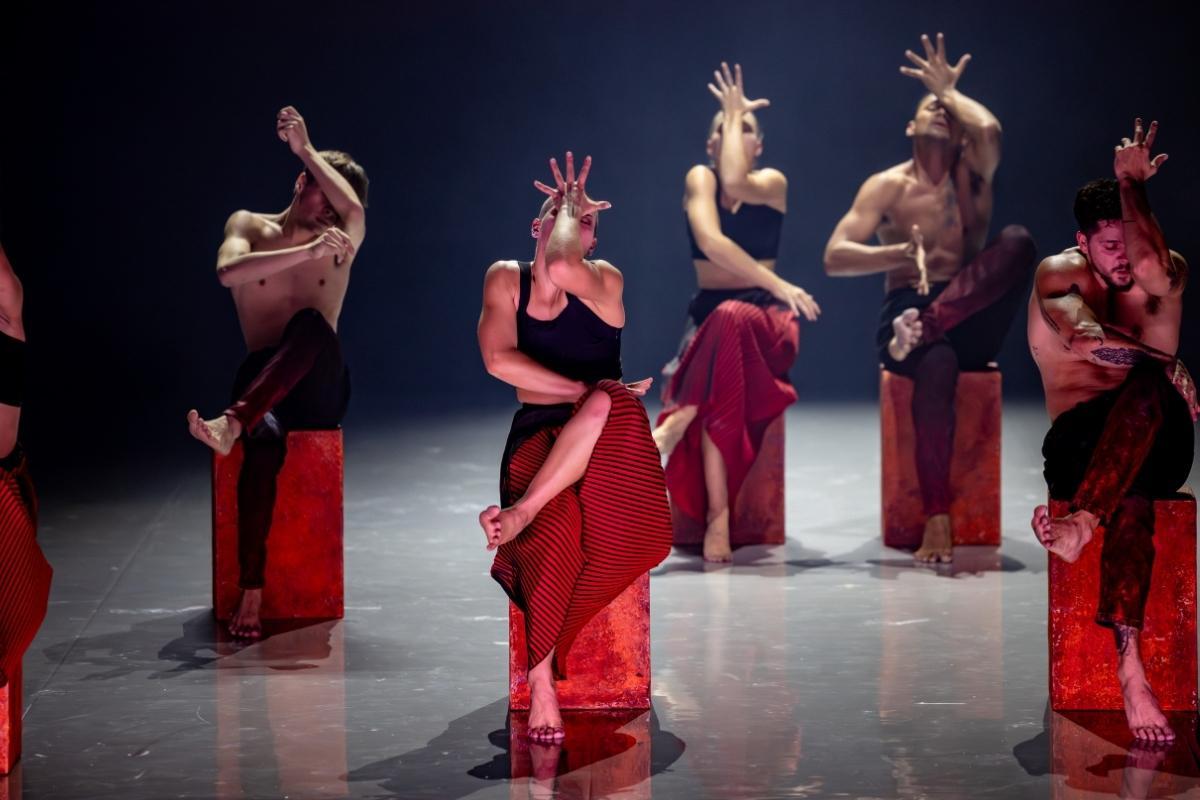Bangarra Dance Theatre’s 'lllume' is an extraordinary visual work that plays on light as a connector and disruptor between the physical world and the spirit world, telling the Bardi and Jawi creation stories representing the creation of life and connection to Country.
Artistic Director and Choreographer Frances Rings’ direction of the dancers is told in and out of the light and is complemented by Goolarrgon Bard visual artist Darrell Sibosado.
The 'Illume' stage is set with a dark sky illuminated by stars and other lighting structures across the stage that reveals and accentuates the movements of the dancers as they begin to tell the tale of the Bari and Jawi people and their history.
The performance is punctuated by Damien Cooper’s lighting design throughout, which is sometimes almost overwhelmingly bright with strobing affects, but that is the point of the use of light in 'Illume'. The aptly named ‘Light Pollution’ scene is further augmented by Composer Brendon Boney’s gorgeous and innovative multi-textured soundtrack. This scene signifies invasion, colonisation and the corruption of the harmony of the traditional Goolarrgon lands in Western Australia and it is enormously effective and moving. The music is bold and sometimes industrial, but also uses some traditional instruments and voices expertly throughout to great advantage.
Each of the dancers is expressive and expert and there is some outstanding interplay with dancers lifting other dancers, intertwining with each other gracefully and seemingly effortlessly. This is most definitely contemporary choreography, but there are echoes of the dances of ancestors and some newer hip hop elements, too.
Light blocks reposition while the dancers move around them, creating beautiful shapes and moving in unison, at times becoming the land itself, at times reacting to their changing land environment as humans. In one scene, the dancers wrap themselves around the trees as if to protect and save them, thereby saving themselves and their Country.

Image © Daniel Boud
And in another of the most amazing scenes, the dancers use large ropes of light to create intricate patterns, which surely takes an enormous amount of precision and exact timing. It is quite spectacular to see.
The costumes by Elizabeth Gadsby work their own magic in accentuating the movements of the dancers and evoking the mood of each section, with the Shadow Spirits costumes being particularly effective in bringing the people into existence from the darkness.
Today, artificial light pollution disrupts ecosystems and obscures the dark night sky, devastating First Nations people’s connections to sky country and limiting their ability to share celestial knowledge and skylore. First Nations people stand on the precipice of the world under threat.
Near the end of the production, a fire burns on stage while the dancers huddle in groups to warm themselves and share that first form of gentle light. Ashes from fires are used for medicine and ceremony and the dancers in this scene celebrate a gentle reconnection as the embers fall upon them.
This is a story of colonisation, of displacement and perhaps a commentary on climate change. It is also a story of resilience and connection to Country and it is utterly captivating.






